Results 9,521 to 9,530 of 12096
Thread: Anandtech News
-
05-29-19, 02:13 AM #9521
Anandtech: MediaTek Announces 7nm 5G With Cortex-A77 CPU, Mali-G77 GPU Coming
Today MedaTek is making quite an unusual announcement: The company is the first to announce a SoC with an integrated 5G modem. Even more interesting is the fact that the new silicon is the first announced design to employ Arm’s brand-new Cortex-A77 cores and new Mali-G77 GPU that were both announced only two days ago.
The odd thing about today’s announcement is that this seems like a relatively early pre-announcement. MediaTek doesn’t divulge the actual product name of the new SoC nor does it go into detail of the specifications. What is divulged however is that the chipset is built on TSMC’s new 7nm process-node, and integrates MediaTek’s own Helio M70 modem IP.
The M70 modem supports 5G NR in the sub-6GHz spectrum with up to 2x carrier aggregation. The modem supports both standalone as well as non-standalone 5G network architectures. It’s to be noted that we won’t be seeing mmWave from MediaTek this early: In the markets that the company sees the SoC we won’t be seeing mmWave networks deployed for several more years, and in general the US is the odd one out with early mmWave deployments while the rest of the world focuses on sub-6GHz coverage.
The use of Arm’s new Cortex-A77 and Mali-G77 GPU means that the SoC will have the most up-to-date IP at release, something that MediaTek hasn’t been able to achieve in a few generations. Alongside the CPU and GPU, MediaTek will employ its third generation APU design, which uses the company own in-house IP.
Finally, the imaging capabilities of the SoC are said to have been greatly enhanced and now supports 4K60 decode and encode along with 80MP ISP capability.
We don’t know a lot more about the SoC, and exactly what product category its targeting, but we expect MediaTek to still largely target the mid-range. We should be seeing devices with the new SoC released in 2020.
Related Reading- Arm's New Cortex-A77 CPU Micro-architecture: Evolving Performance
- Arm's New Mali-G77 & Valhall GPU Architecture: A Major Leap
- Sizing Up The 5G Modem Market: Qualcomm, Intel, Huawei, Samsung, UniSOC, and Mediatek
- MediaTek Announces New Premium Helio P90 SoC
- MediaTek Launches Helio A Series SoCs, Starting With Helio A22
- MediaTek Announces New Premium Helio P60 SoC
More...
-
05-29-19, 07:24 AM #9522
Anandtech: Intel Unveils 10th Gen Core Ice Lake-U & Ice Lake-Y Mobile CPUs: 10nm Sunn
At Intel’s Keynote presentation here at Computex, the company finally lifted the lid on its first widely available new CPU design on 10nm, called Ice Lake. The official marketing name for these processors will be ‘Intel 10th Generation Core’, and will feature up to four cores, new Gen11 graphics supplying up to 1TF of compute, and built in support for Wi-Fi 6 and Thunderbolt 3.
More...
-
05-29-19, 08:46 AM #9523
Anandtech: Intel Announces Optane Memory M15: 3D XPoint On M.2 PCIe 3.0 x4
The first major hardware update to Intel's consumer Optane M.2 drives is coming soon, with the Optane Memory M15 drive intended for caching use. Compared to the original Optane Memory and the Optane Memory M10, the M15 updates the controller to widen the PCIe link from two lanes to four lanes, enabling significant performance increases. The maximum throughput will still be lower than what high-end NAND flash based SSDs can achieve at high queue depths, but the Optane Memory M15 doesn't sacrifice any of its unbeatable latency at low queue depths in order to increase throughput compared to its predecessors.
Earlier leaks had indicated that the M15 (codenamed Carson Beach) would add a 128GB capacity, but so far Intel is only announcing the same three capacities offered by the Optane Memory M10: 16GB, 32GB and 64GB. The Optane M10's hardware is also sold as the Optane SSD 800P, and that product line does include a 128GB/118GB model. The upcoming Optane SSD 815P that will similarly share a hardware platform with the Optane Memory M15 is expected to continue offering both 58GB and 118GB usable capacities.
[TABLE="align: center"]
[TR="class: tgrey"]
[TD="colspan: 3, align: center"]Intel Optane Memory Specifications[/TD]
[/TR]
[TR="class: tlblue"]
[TD="width: 160, colspan: 1"]Model[/TD]
[TD="width: 161"]Optane Memory M15[/TD]
[TD="width: 161, colspan: 1"]Optane Memory M10[/TD]
[/TR]
[TR]
[TD="class: tlgrey, colspan: 1"]Form Factor[/TD]
[TD="align: center"]M.2 2280 M key[/TD]
[TD="colspan: 1, align: center"]M.2 2280 B+M key[/TD]
[/TR]
[TR]
[TD="class: tlgrey, colspan: 1"]Interface[/TD]
[TD="align: center"]PCIe 3.0 x4[/TD]
[TD="colspan: 1, align: center"]PCIe 3.0 x2[/TD]
[/TR]
[TR]
[TD="class: tlgrey, colspan: 1"]Protocol[/TD]
[TD="align: center"]NVMe 1.1[/TD]
[TD="colspan: 1, align: center"]NVMe 1.1[/TD]
[/TR]
[TR]
[TD="class: tlgrey, colspan: 1"]Capacities[/TD]
[TD="align: center"]16 GB, 32 GB, 64 GB[/TD]
[TD="colspan: 1, align: center"]16 GB, 32 GB, 64 GB[/TD]
[/TR]
[TR]
[TD="class: tlgrey, colspan: 1"]Memory[/TD]
[TD="align: center"]128Gb 20nm Intel 3D XPoint[/TD]
[TD="colspan: 1, align: center"]128Gb 20nm Intel 3D XPoint[/TD]
[/TR]
[TR]
[TD="class: tlgrey, colspan: 1"]Sequential Read[/TD]
[TD="align: center"]up to 2000 MB/s[/TD]
[TD="colspan: 1, align: center"]up to 1450 MB/s[/TD]
[/TR]
[TR]
[TD="class: tlgrey, colspan: 1"]Sequential Write[/TD]
[TD="align: center"]up to 900 MB/s[/TD]
[TD="colspan: 1, align: center"]up to 640 MB/s[/TD]
[/TR]
[TR]
[TD="class: tlgrey, colspan: 1"]Random Read (QD4)[/TD]
[TD="align: center"]up to 450k IOPS[/TD]
[TD="colspan: 1, align: center"]up to 250k IOPS[/TD]
[/TR]
[TR]
[TD="class: tlgrey, colspan: 1"]Random Write (QD4)[/TD]
[TD="align: center"]up to 220k IOPS[/TD]
[TD="colspan: 1, align: center"]up to 140k IOPS[/TD]
[/TR]
[TR]
[TD="class: tlgrey, colspan: 1"]Read Latency (QD1)[/TD]
[TD="align: center"]6.75 µs[/TD]
[TD="colspan: 1, align: center"]6.75 µs[/TD]
[/TR]
[TR]
[TD="class: tlgrey, colspan: 1"]Write Latency (QD1)[/TD]
[TD="align: center"]12 µs[/TD]
[TD="colspan: 1, align: center"]18µs[/TD]
[/TR]
[TR]
[TD="class: tlgrey, colspan: 1"]Max Active Power[/TD]
[TD="align: center"]5.5 W[/TD]
[TD="colspan: 1, align: center"]3.5 W[/TD]
[/TR]
[TR]
[TD="class: tlgrey, colspan: 1"]Idle Power[/TD]
[TD="align: center"]
-
05-29-19, 08:46 AM #9524
Anandtech: Toshiba Announces XG6-P NVMe SSD For Client And Datacenter
Toshiba has announced a new variant of their XG6 client NVMe SSD: the XG6-P that adds a 2TB option to the family. The previous XG5 generation of SSDs followed the same pattern, with the initial version offering mainstream capacities up to 1TB, and the later -P version offering just higher capacities with tuned firmware for better performance on heavier workloads. When the XG6 launched, its performance was enough to render the 1TB XG5-P obsolete, but the 2TB XG5-P didn't have a proper successor until now.
The XG6-P doesn't bring any improvement to the top-line performance numbers compared to the original XG6. While the XG6 and XG6-P are both quite modern in their use of 96-layer 3D NAND, they are still using the same controller as the XG5 family, and there doesn't seem to be much room to squeeze more performance out of that chip. However, like the XG5-P, the XG6-P can be expected to offer some improvements for use cases that aren't quantified on the spec sheet, such as write performance after the SLC cache is filled.
Toshiba's XG family of SSDs are OEM-only products intended for high-end client and entry-level datacenter usage (eg. server boot and logging), while their BG series covers more mainstream segments and was significantly updated earlier this year with the BG4. Toshiba has not released a retail counterpart to an XG series since the XG3 was adapted into the Toshiba OCZ RD400 in 2016. The XG5-P will start sampling next month, so it should start showing up in notebooks this fall.Toshiba Client OEM NVMe SSD Comparison Model XG6-P XG6 XG5 XG5-P Capacities up to 2TB 256GB, 512GB, 1024GB 1TB, 2TB Form Factor M.2 2280 Host Interface PCIe 3.1 x4 Protocol NVMe 1.3a NVMe 1.2.1 NAND Flash Toshiba 96L BiCS4 3D TLC Toshiba 64L BiCS3 3D TLC Sequential Read 3180 MB/s 3180 MB/s 3000 MB/s 3000 MB/s Sequential Write 2920 MB/s 2960 MB/s 2100 MB/s 2200 MB/s Random Read 355k IOPS 355k IOPS 320k IOPS Random Write 365k IOPS 365k IOPS 265k IOPS Power Read < 5 W 4.2 W 4.5 W 4.9 W Write 4.7 W 3.4 W Idle 3 mW 3 mW 3 mW 3 mW TCG Opal Encryption Optional Announced May 2019 July 2018 November 2017 May 2017
Want to keep up to date with all of our Computex 2019 Coverage? 
Laptops
Hardware
ChipsFollow AnandTech's breaking news here!
More...
-
05-29-19, 10:41 AM #9525
Anandtech: Intel's Project Athena: Defining The Next Generation Of Premium Laptops
In previous years and generations, Intel has at times instigated a platform development strategy with its partners in order to drive form factor, experience, and ultimately, revenue. In the past we've seen Centrino drive to bring Wi-Fi to the consumer, and the Ultrabook nomenclature to define thin and light designs. Project Athena is the latest project by Intel, designed to drive better Wi-Fi 6 experiences, premium designs, driving AI-accelerated workflow, and longer battery life, all centered around the company's upcoming Ice Lake processors.
More...
-
05-29-19, 10:41 AM #9526
Anandtech: MSI Unveils the MEG X570 Ace: Black and Gold For AMD 50
With a theme that fits in with AMD's 50th anniversary, MSI has unveiled the MEG X570 Ace motherboard. With a black and gold design for a more elegant look, it also has a good range of features including triple PCIe 4.0 M.2 slots, and active cooling integrated into its chipset heatsink.
The MSI MEG X570 Ace motherboard represents its premium MEG range and as we've seen from its range on the Intel Z390 chipset, MSI has followed the same naming structure for users to easily identify which each range signifies. The MEG X570 Ace has three PCIe 4.0 M.2 slots, each with its own individual Lightning Gen4 M.2 heatshield which amalgamates into the boards black and gold designed heatsinks. Also, present on the rear panel cover is MSI's RGB Infinity Mirror.
The board also has four DDR4 memory slots, three full-length PCIe 4.0 slots, and two PCIe 4.0 x1 slots. Molded directly into the X570 chipset heatsink is a cooling fan which uses a double ball bearing design. Providing power to the CPU is two 8-pin 12 V ATX power inputs, while the power delivery is using an extended 8 to 6.5 mm heat pipe which extends from the power delivery directly down to the chipset.
On the design, it's reminiscent of the AMD 50 anniversary gold design, and MSI itself was idealizing the MEG X570 Ace alongside its new MPG Sekira 500G chassis with G.Skill Trident Z Royal gold DDR4 memory for an elegant, and classy looking system.
On the rear panel of the MSI MEG X570 Ace motherboard, there's a clear CMOS, and BIOS flashing button which has its own dedicated USB 3.1 G1 Type-A slot highlighted with a red outline. There are three USB 3.1 G2 Type-A ports, a single USB 3.1 G2 Type-C, two USB 3.1 G1 Type-A ports, and two USB 2.0 ports. Networking capability is interesting with the decision to include a Realtek RTL8125AG 2.5 GbE controlled LAN port, with the other likely to be controlled by an Intel 1 GbE option. The wireless is powered by an Intel AX200 Wi-Fi 6 802.11ax Wi-Fi module which also offers users with Bluetooth 5 connectivity.
Gallery: MSI MEG X570 Ace Motherboard Gallery





It is likely that the new MSI X570 motherboards will be available prior to the launch of AMD's Ryzen 3000 series of Matisse processors, but we expect pricing and availability to be released sometime next month.
Want to keep up to date with all of our Computex 2019 Coverage? 
Laptops
Hardware
ChipsFollow AnandTech's breaking news here!
More...
-
05-29-19, 12:46 PM #9527
Anandtech: HP’s EliteBook x360 1040 G6: 24 Hours of Battery Life, Core i7, & 1W Displ
HP has announced a 14-inch convertible laptop that promises to last for 24 hours on one charge. Featuring a 1W LCD panel, powered by Intel’s 8th Gen Core processor, and embodied in a 1.69-cm thick aluminum chassis, the EliteBook x360 1040 G6 promises to bring together almost all the business/enterprise features that HP has to offer (at least optionally), including privacy screens, privacy camera, Sure Sense anti-malware protection, TPM 2.0, and so on.
Writing these words on a 13-incher, I am on an Airbus 350 AWB flight enroute to Computex that does not happen to have 110/220V power outlets for Economy Premium passengers at all. It does have a 5V/2A USB-A port, but, as you imagine, this is not enough to feed the beast with a 500-nits IPS display (even when the luminance is set to a level below comfortable), so I am running out of juice pretty quickly. There comes necessity either for a high-capacity battery, or a very power-efficient display panel and here is where the EliteBook x360 1040 G6 comes into play.
Powered by Intel’s quad-core Core i7-8665U processor with the UHD Graphics 620, the EliteBook x360 1040 G6 is outfitted with a 14-inch Full-HD display panel that consumes only 1 Watt of power. The system can then be outfitted with up to 32 GB of DDR4-2666 memory as well as an up to 2 TB SSD, a rare combination for a 14-inch notebook. As far as I/O is concerned, the notebook has a 802.11ax + Bluetooth 5 controller, Thunderbolt 3, USB ports, a 1080p webcam, an advanced audio subsystem co-designed with Bang & Olufsen, and so on.
The key selling feature of the EliteBook x360 1040 G6 is its battery life. While it is natural to expect the laptop to use an ultra high-capacity (70Wh+)battery, this is not the case. The notebook has a 56.2 Wh battery, which is in line with other PCs of this class, but uses a specially designed UWVA touch-enabled display panel featuring a Full-HD resolution as well as up to 400 nits brightness. When the brightness of the panel is not cranked up to the max, it consumes only about a Watt of power, enabling the laptop to work for a long time on one charge. Meanwhile, HP intends to offer other versions of the EliteBook x360 1040 G6 that will be outfitted with Full-HD screens offering up to 1000 nits brightness (to make it easier to use them outside) or an Ultra-HD resolution. Obviously, such LCD panels are considerably more power hungry and laptops with such displays will not offer a 24-hour battery life.
HP will start selling its EliteBook x360 1040 G6 convertible laptop in July starting at $1,499.
Source: HP
Want to keep up to date with all of our Computex 2019 Coverage? 
Laptops
Hardware
ChipsFollow AnandTech's breaking news here!
More...
-
05-29-19, 12:46 PM #9528
Anandtech: EVGA SR-3 Dark Motherboard: LGA3647 For Intel Xeon W-3175X
At Computex 2019, EVGA displayed an LGA-3647 C621 motherboard designed for the Intel Xeon W-3175X 28-core processor, the EVGA SR-3 Dark. The new EVGA SR-3 Dark follows on the Super Record lineage from the legendary Classified SR-2 dual LGA-1366 socket model from back in 2010.
While there were no official specifications on hand, the EVGA SR-3 Dark has six full-length PCIe 3.0 slots, with six DDR4 memory slots that will allow memory to run in hex-channel mode. This is because the board is targeted at users looking to use the monstrous Intel Xeon W-3175X processor which features 28-cores, and is also overclockable depending on the cooling method used. Along the right-hand side is a custom water block which cools the boards 20-phase power delivery, and extends down to keep the C621 cool too. This was designed in-house by EVGA but outsourced to an unknown OEM for production.
Also focusing on the power, the EVGA SR-3 Dark has four 8-pin CPU 12 V ATX, and a single 24-pin 12 V power input with right-angled connectors. Next to this is two U.2 slots for fast stackable storage and a six SATA ports. Located between the top and second full-length PCIe 3.0 slot is a single M.2 22110 slot. It's clear by the configuration that the board is geared towards maximizing performance at the expense of features such as multiple M.2 slots. In the top right-hand corner is an overclocker's toolkit in the top right corner with dual LED debug. After speaking to EVGA at our meeting, he confirmed the board will be targetted at overclockers and enthusiasts looking to push the overclockable Intel Xeon W-3175X to its limits.
The EVGA SR-3 Dark is scheduled to launch sometime in August with the pricing currently unknown. A few figures were thrown around during our meeting, but it's highly likely that it will come in much cheaper than ASUS's C621 model, the ROG Dominus Extreme. Also expected sometime soon is GIGABYTE's C621 Aorus Extreme.
Want to keep up to date with all of our Computex 2019 Coverage? 
Laptops
Hardware
ChipsFollow AnandTech's breaking news here!
More...
-
05-29-19, 01:31 PM #9529
Anandtech: Antec Unsheathes Katana: A New DDR4 Memory Series for Enthusiasts
In the market of PC components for enthusiasts and modders, Antec is trying to find a market to expand with a set of tools that it knows the best: style and design. The company’s upcoming Katana memory modules are all about style and design.
Antec entered the market of memory modules just about a year ago with a clear aim: to sell memory modules to enthusiasts buying its stylish PC cases. The company probably has hit at least some of it its goals, which is why it is rolling out a new DDR4 product series, the Katana.
Branded after the famous Japanese sword, the Katana memory module has an appropriate shape with RGB LEDs (Antec also shows off a regular, RGB-less version) and distinctive heatspreaders. Design of the DIMMs is actually their main selling feature
At present Antec goes all about the volume with its Katana memory: at Computex the company demonstrated a 16 GB dual-channel DDR4-3600 CL18 20-20-44 at 1.35 V memory kit. Obviously, the company may expand the lineup if needed.
Antec does not say when and where its Katana memory modules are set to available, but it is logical to expect them to hit the market this year at prices comparable to those of other memory modules aimed at the same market segment.
Source: Antec
Want to keep up to date with all of our Computex 2019 Coverage? 
Laptops
Hardware
ChipsFollow AnandTech's breaking news here!
More...
-
05-29-19, 02:08 PM #9530
Anandtech: GIGABYTE Shows PCIe 4.0 x16 Four-Way M.2 PCIe Add-In Card
We’ve seen some of these before – an add-in card that helps expand the M.2 capabilities of a system. Typically motherboards come with up to three M.2 slots, however the high-end desktop market might need more than this, and with plenty of PCIe lanes to spare, for those that need it, extra add-in card based storage is vital. In the last generation of products, we saw a number of motherboard OEMs launch PCIe 3.0 based designs, offering another two or four M.2 slots. GIGABYTE the first company we’ve seen with a four-way design for PCIe 4.0.
The card takes a PCIe 4.0 x16 slot (can be run at PCIe 3.0 mode, for what it’s worth), and branches out into four PCIe 4.0 M.2 slots. No extra power is needed – it takes up to 75W from the socket, although it’s unlikely that four M.2 SSDs will draw more than 32W. The shroud has a fan to assist cooling, however the metal casing acts as a top and bottom heatsink.
Ultimately the only systems that can support PCIe 4.0 right now will be Ryzen 3000, but it’s unlikely that system users there will dedicate all of the x16 lanes for the GPU to extra storage. In that case, we have to look to future Threadripper parts that are likely PCIe 4.0 enabled. When asked, GIGABYTE said that this expansion card is aimed at AMD machines, mostly because of a lack of proper feature support on Intel systems.
Want to keep up to date with all of our Computex 2019 Coverage? 
Laptops
Hardware
ChipsFollow AnandTech's breaking news here!
More...
Thread Information
Users Browsing this Thread
There are currently 46 users browsing this thread. (0 members and 46 guests)




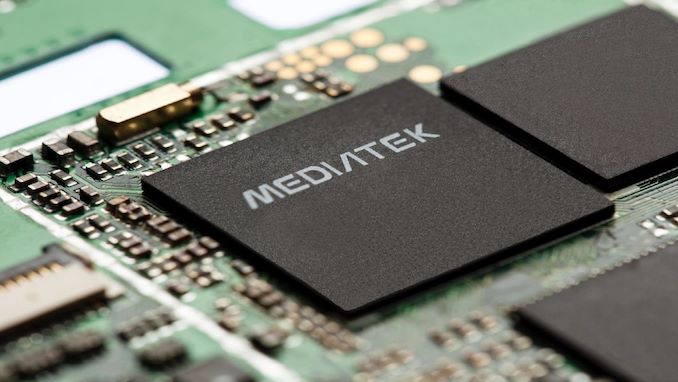
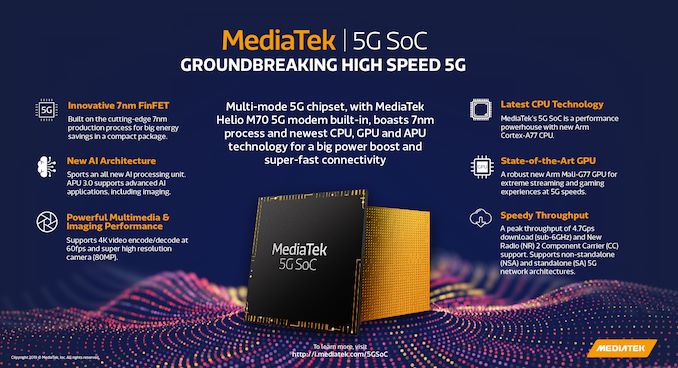

 Quote
Quote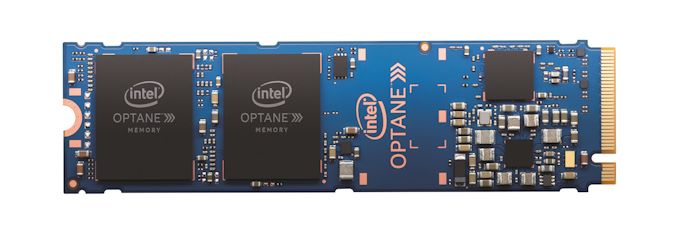
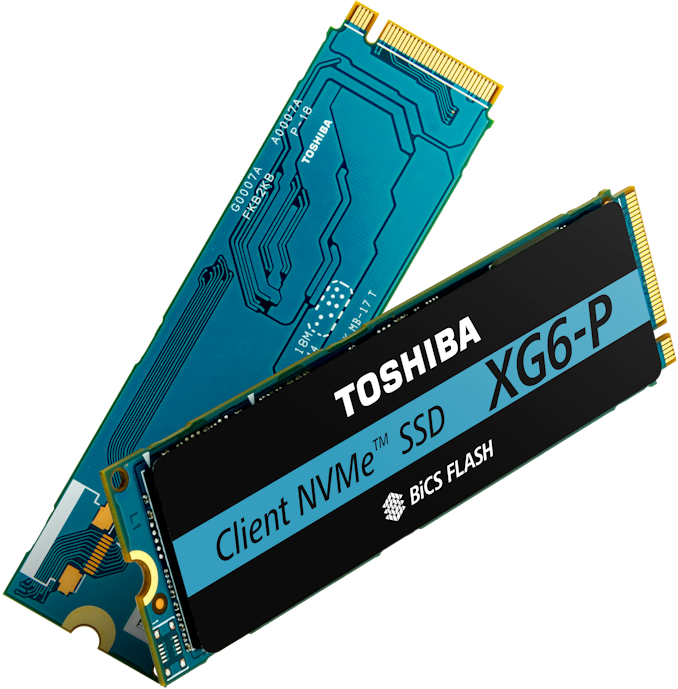

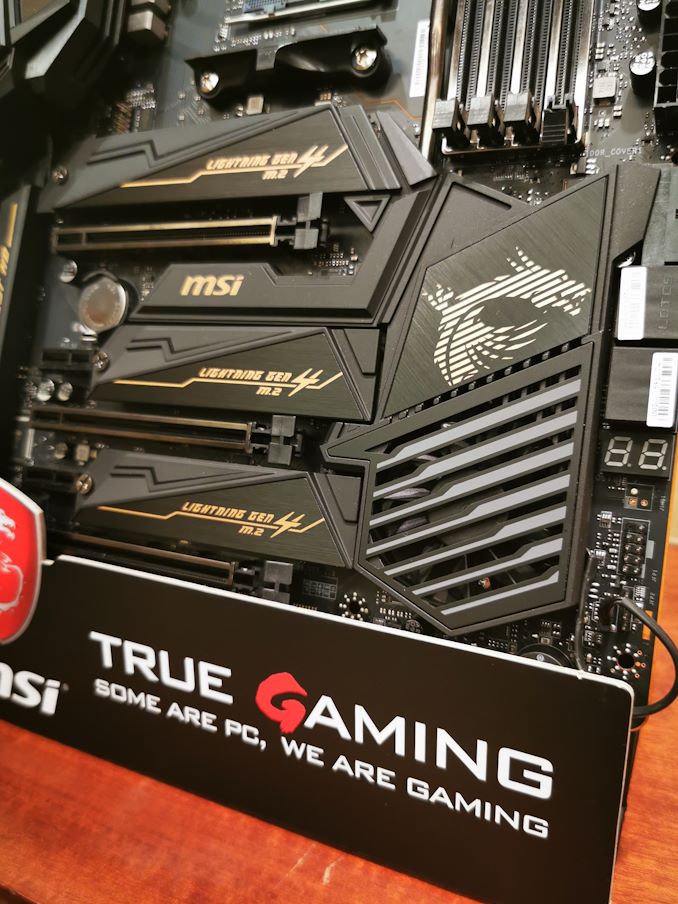
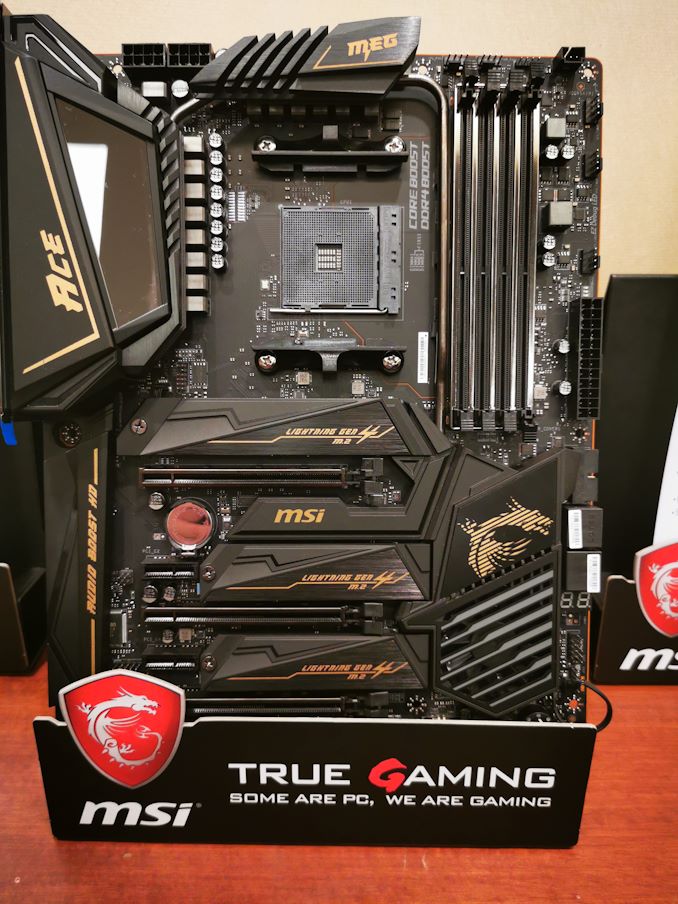
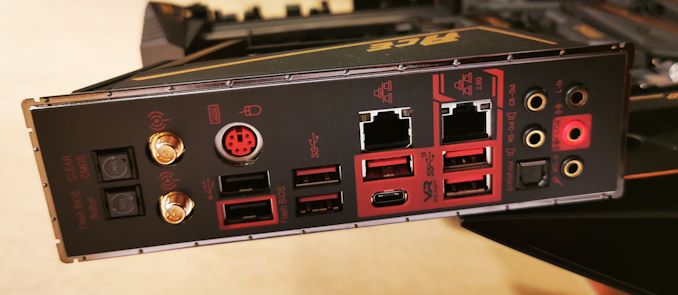
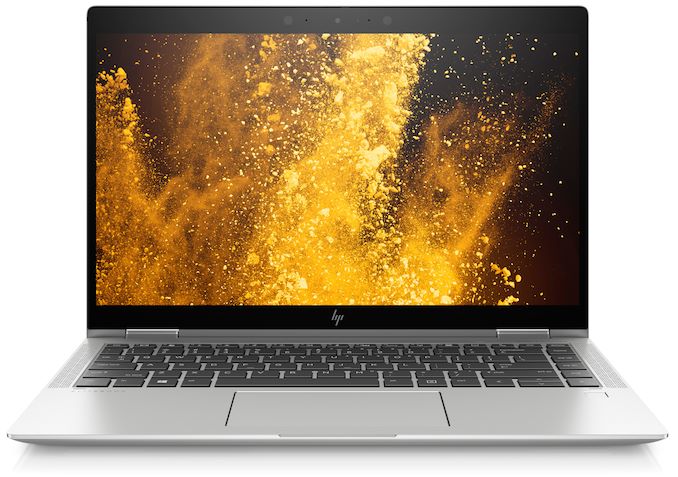

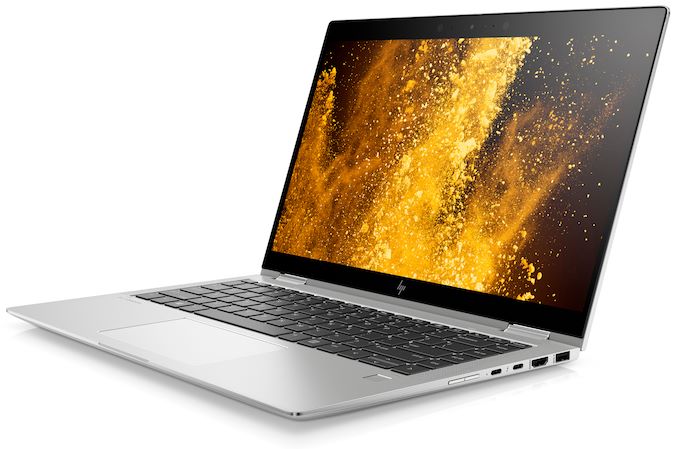
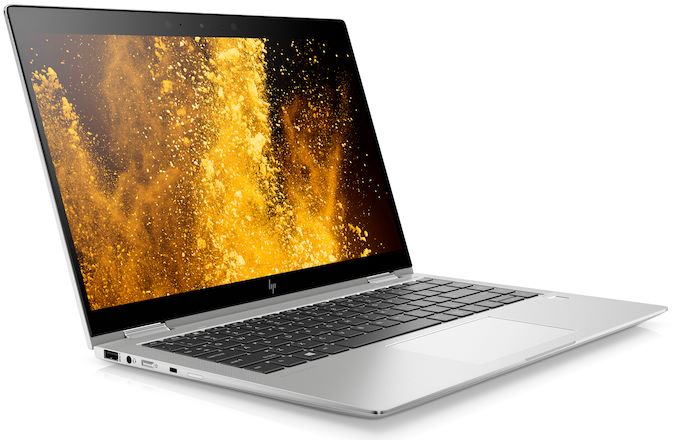

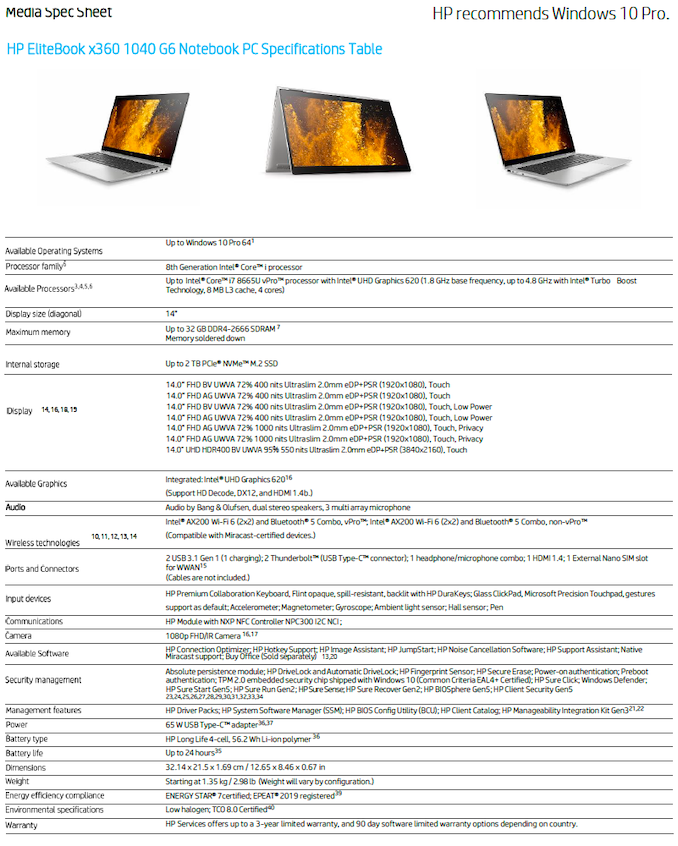
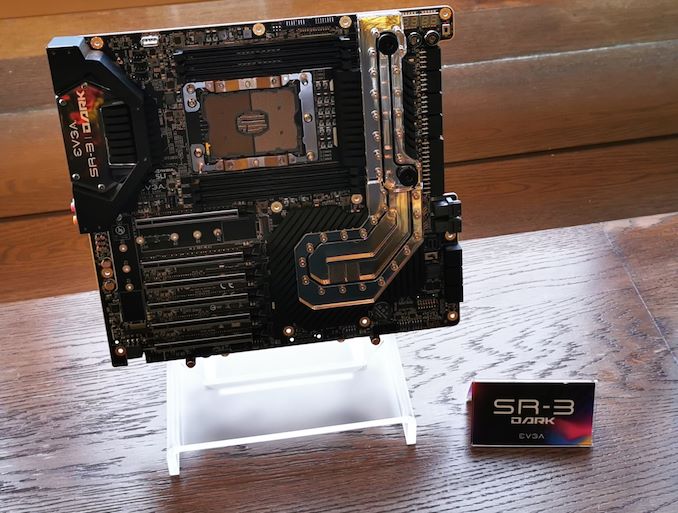
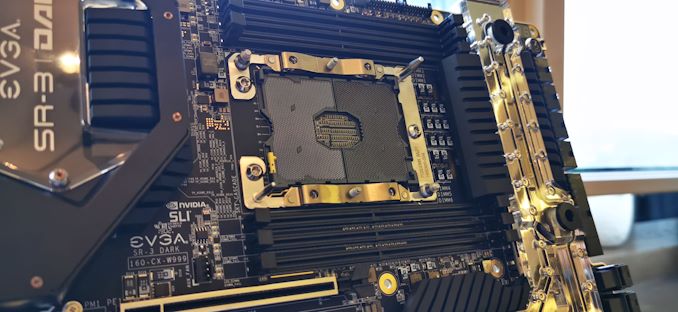
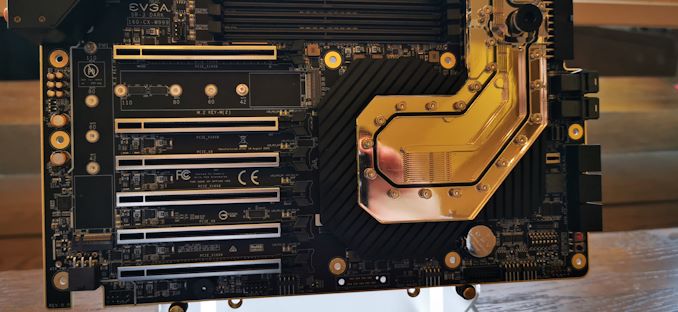
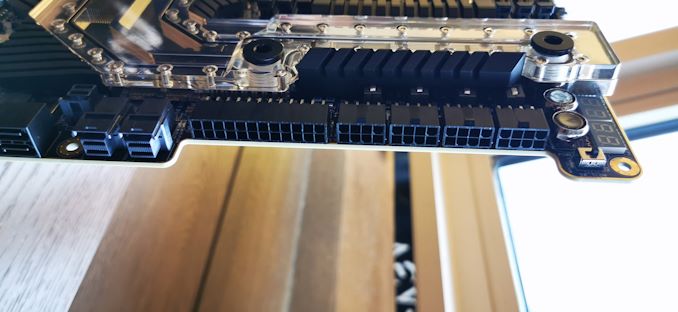
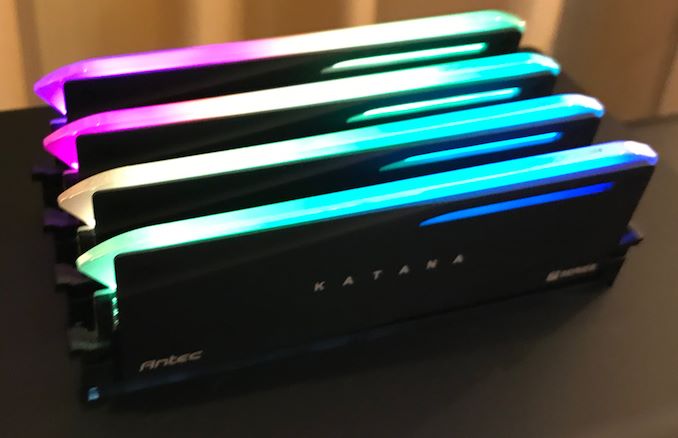

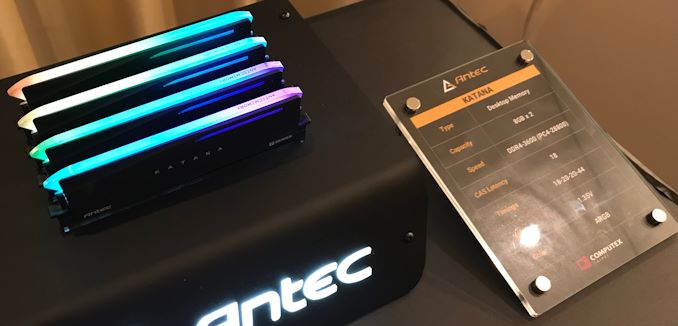
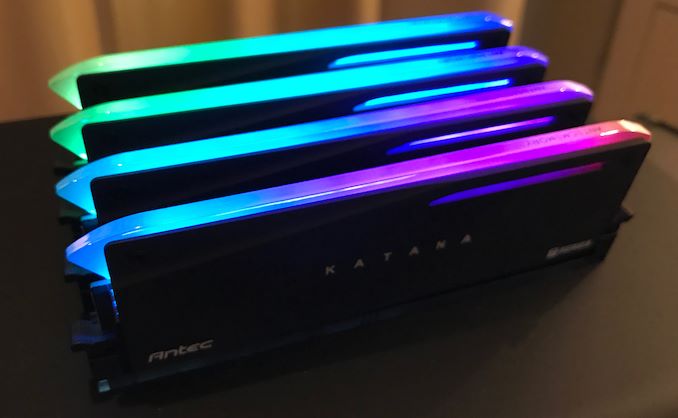
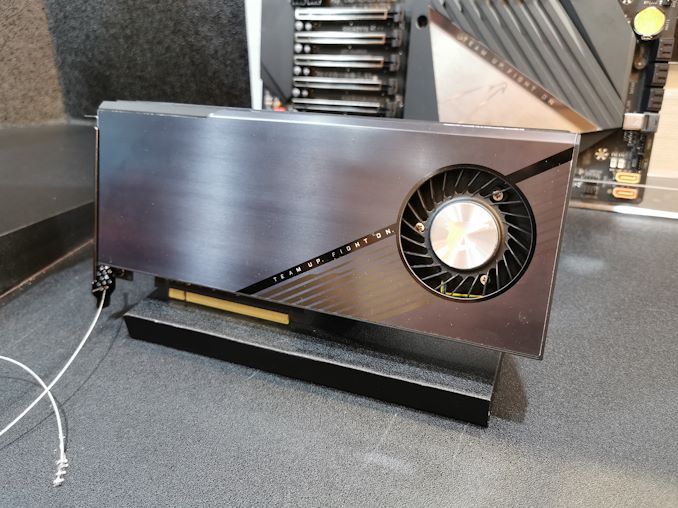
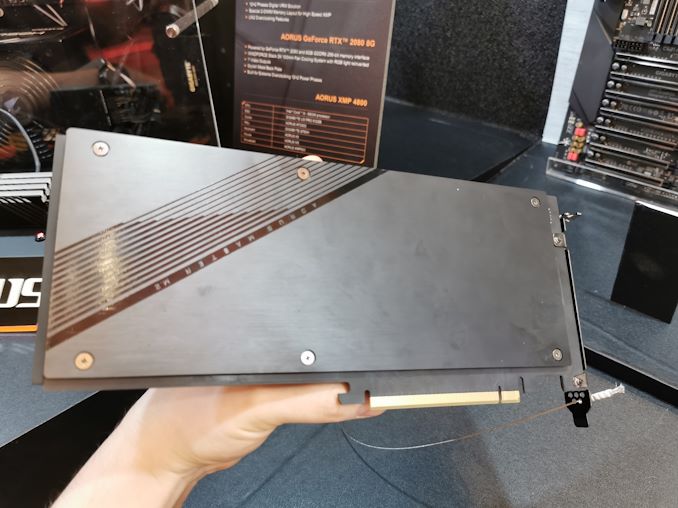
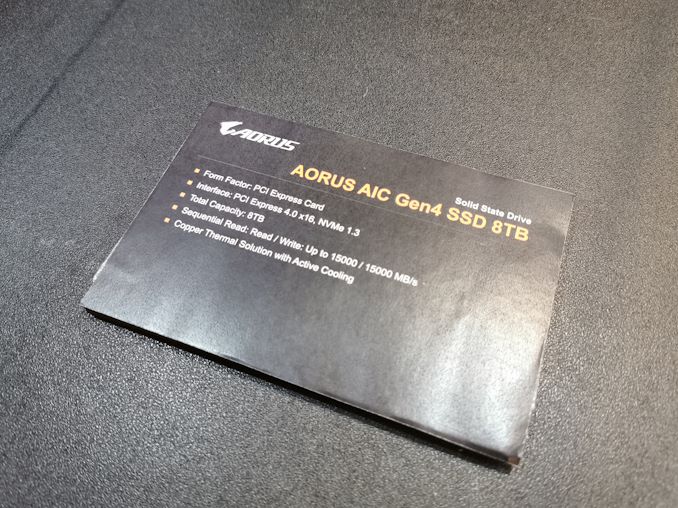
















Bookmarks